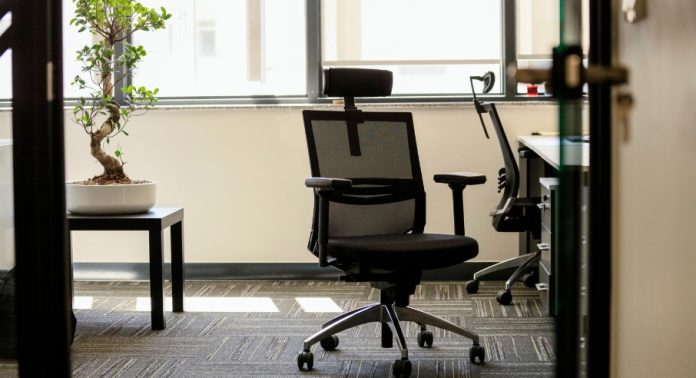Table of Contents
Tips For Keeping Your Home Office Chair in Top Condition
Home office chairs are an essential part of a workspace, contributing significantly to your comfort and productivity. Proper maintenance is key to extending its lifespan and ensuring it continues to provide the support you need. In this blog, we’ll share valuable tips for keeping your home office chair in top condition, helping you get the most out of your investment.
Regular Cleaning
Dust and Debris Removal
Dust and debris can accumulate on office chairs over time, especially in the crevices and hard-to-reach areas. Use a vacuum cleaner with a brush attachment to remove dust from the fabric, mesh, or leather surfaces.
Spot Cleaning Stains

Spills and stains are inevitable, but addressing them promptly can prevent permanent damage. For fabric chairs, use a mild soap and water solution to blot the stain gently. For leather chairs, use a specialised leather cleaner to maintain the material’s integrity. Always test cleaning solutions on a small, inconspicuous area first to ensure they don’t cause discolouration.
Maintaining Moving Parts
Lubricating Mechanisms
The moving parts of your office chair, such as the casters, swivel mechanism, and tilt function, require regular lubrication to operate smoothly. Use a silicone-based lubricant on these parts to prevent squeaking and ensure effortless movement. You may want to avoid using oil-based lubricants as these may attract dust and dirt.
Checking and Tightening Screws
Over time, screws and bolts can loosen, affecting the stability and safety of your chair. Regularly inspect all the screws and bolts on your chair and tighten them as needed, as this simple maintenance step can prevent more significant issues.
Maintaining Comfort and Support
Regularly Adjusting Settings

Your body’s needs can change over time, so it’s essential to regularly adjust your chair’s settings to ensure optimal ergonomic support. Check the height, tilt, armrest position, and lumbar support to make sure they are correctly adjusted to your body and workspace.
Inspecting Cushioning
The cushioning in your office chair can wear out over time, reducing comfort and support. Periodically check the seat and backrest cushioning for signs of wear and sagging. If the cushioning is no longer supportive, consider replacing it or using additional padding.
Protecting Your Chair: Preventing Damage
Using a Chair Mat
Placing a chair mat under your office chair can protect both the chair’s casters and your flooring. Chair mats reduce friction, making it easier to move the chair and preventing wear and tear on the casters. They also protect carpets, hardwood, and tile floors from damage caused by rolling chairs.
Avoiding Excessive Weight
Most office chairs have a weight limit specified by the manufacturer, which, if exceeded, can damage the chair’s structure and mechanisms in the long run. As such, you should always ensure that the chair is used within its weight capacity to maintain its integrity and function.
Investing in Quality: A Key to Longevity
Choosing the Right Chair

Investing in a high-quality office chair from the start can significantly impact its longevity. Look for office chairs with durable materials, robust construction, and a good warranty. While high-quality chairs might come with a higher price tag, their durability and comfort make them a worthwhile investment.
Following Manufacturer’s Guidelines
Always follow the manufacturer’s care and maintenance guidelines for your specific chair model. These guidelines provide the best practices for keeping your chair in top condition and can help you avoid actions that might void the warranty.
The Benefits of Proper Maintenance
Keeping your home office chair in top condition requires regular cleaning, proper care of upholstery, maintenance of moving parts, and making necessary adjustments. By following these tips, you can extend the lifespan of your chair, maintain its ergonomic benefits, and ensure a comfortable and productive work environment.
Remember, a well-maintained office chair is not just an investment in a piece of furniture, but an investment in your health and well-being. Taking the time to care for your chair can lead to better posture, reduced discomfort, and a more enjoyable work experience.


